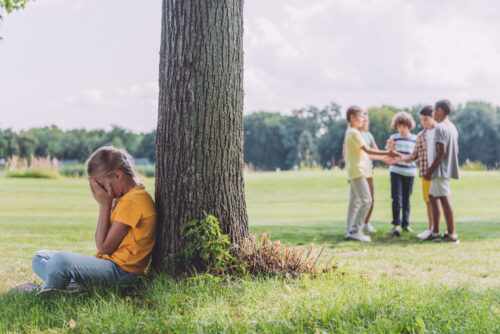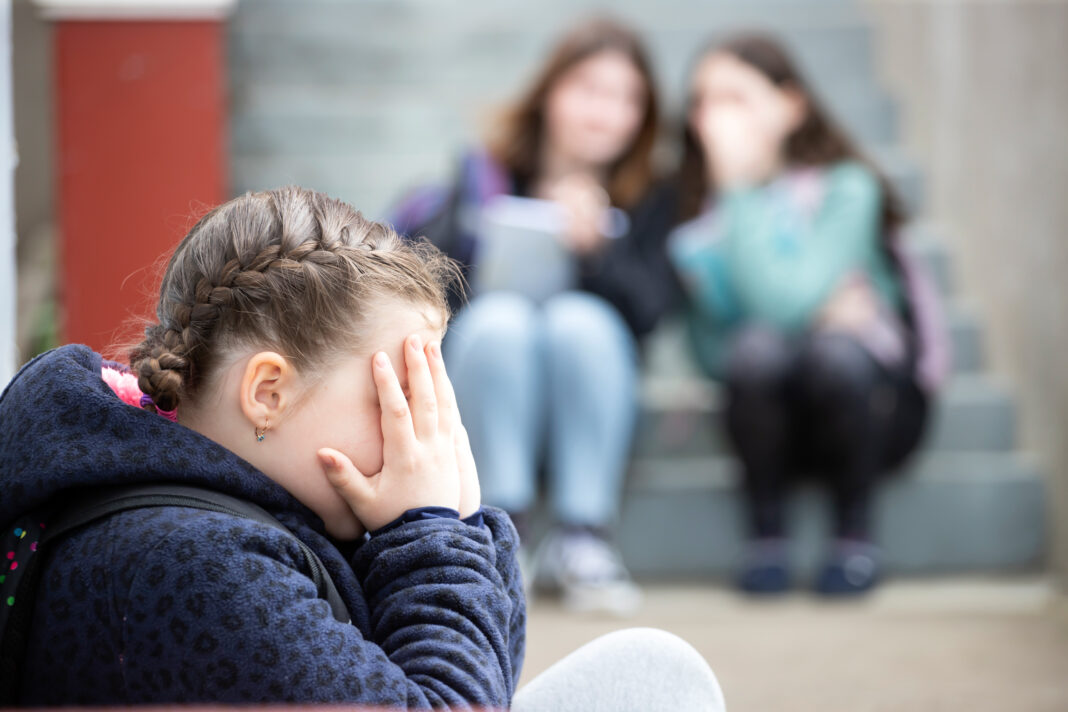What Does Bullying Look Like at Different Ages?
Bullying can take different forms depending on a child’s developmental stage. Understanding these variations can help parents identify and address the issue early.
- Early Childhood (Ages 3–6): Play-Based Bullying
At this age, bullying may not be intentional but can still be hurtful. Young children are learning social norms, and they may exclude, push, or take toys away from others.
Signs to Watch For:
✔ Your child avoids certain playmates or activities.
✔ Frequent complaints about not wanting to go to preschool or daycare.
✔ Sudden changes in behavior, like increased crying or clinging.
How to Respond:
✅ Teach empathy by asking, “How would you feel if someone did that to you?”
✅ Encourage social skills by role-playing kind interactions.
✅ Speak with teachers or caregivers if the behavior persists.

- Primary School (Ages 6–12): Verbal & Social Bullying
As children grow, bullying becomes more structured and intentional. Name-calling, teasing, exclusion, and spreading rumors are common.
Signs to Watch For:
✔ Complaints of stomachaches or headaches to avoid school.
✔ Sudden drop in confidence or self-esteem.
✔ Loss of interest in activities they once enjoyed.
How to Respond:
✅ Listen and Validate – Let your child talk without interrupting. Say, “That sounds really difficult. I’m glad you told me.”
✅ Empower Rather Than Rescue – Instead of jumping in immediately, ask, “How do you think we can handle this together?”
✅ Teach Assertiveness – Encourage responses like, “I don’t like when you say that. Please stop.”
✅ Work With the School – If bullying is ongoing, involve teachers and school staff in a calm and constructive way.
- Adolescence (Ages 12+): Cyberbullying & Social Pressure
Teenagers face different forms of bullying, including online harassment, exclusion from peer groups, and pressure to conform. Cyberbullying—mean messages, public shaming, or spreading false information—can be particularly damaging.
Signs to Watch For:
✔ Becoming secretive about phone or social media use.
✔ Mood swings, withdrawal from family, or sudden anger.
✔ Anxiety about going to school or meeting friends.
How to Respond:
✅ Open Conversations About Online Safety – Discuss responsible social media use and privacy settings.
✅ Encourage Digital Breaks – Taking time away from screens can help manage stress.
✅ Monitor Without Invading Privacy – Instead of spying, ask, “Would you like to talk about anything happening online?”
✅ Get Professional Help If Needed – If bullying is affecting their mental health, consider counselling support.

How to Help Your Child Respond to Bullying
No matter the age, empowering your child with strategies to respond to bullying is key. Here are some approaches that can help:
- Teach Calm & Assertive Responses
Encourage your child to respond firmly but without aggression. For example:
✔ “Please stop. I don’t like that.”
✔ Walking away confidently without engaging.
- Role-Play Scenarios at Home
Practicing responses can help children feel more prepared. Try role-playing different bullying situations and discussing the best ways to handle them.
- Encourage a Strong Support System
Help your child identify safe friends, teachers, or family members they can talk to when feeling upset. Having a support system can make a big difference.
- Document and Report Persistent Bullying
If bullying continues, encourage your child to keep a record of incidents (messages, screenshots, dates). Schools and workplaces often require documented reports to take action.

Final Thoughts: Building Confidence & Resilience
Bullying can be tough to deal with, but when children know they are supported, they are better equipped to handle challenges. By validating their feelings, teaching them practical responses, and working together as a family, we can help them develop resilience and confidence.
🌟 Have you or your child faced a bullying situation? What strategies worked for you? Let’s support each other—share your experiences in the comments! 😊




